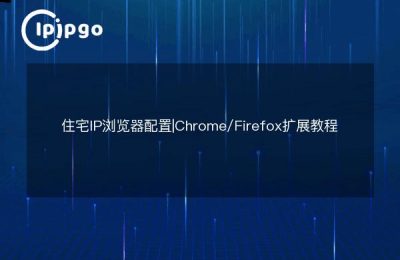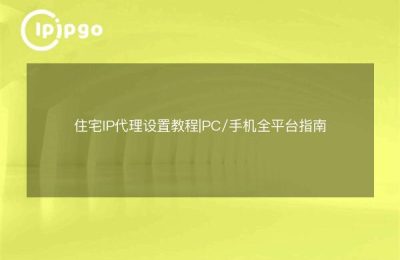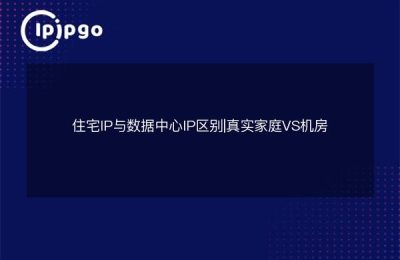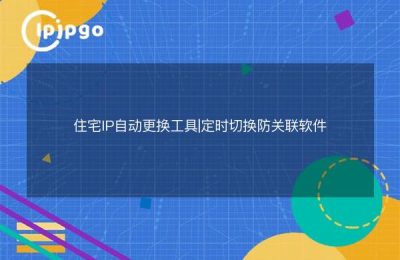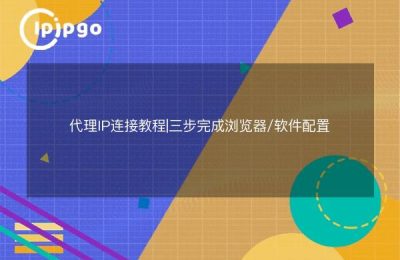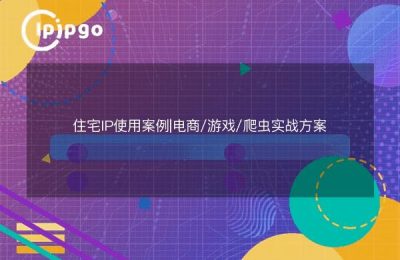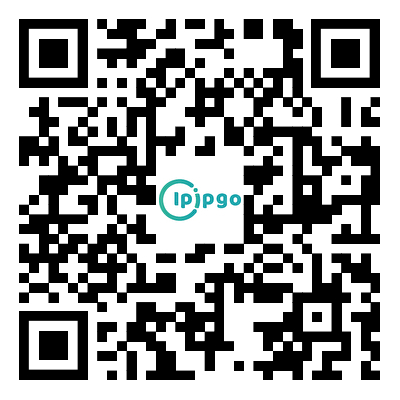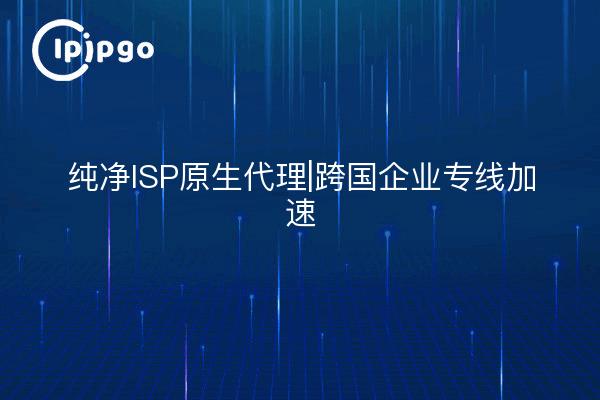
What is a Pure ISP Native Agent?
Many users have heard of proxy IPs, but are easily confused by concepts such as "server room IP" and "data center proxy". Pure ISP Native Proxy meansHome broadband IP assigned through regular telecom operatorsThe most important feature of this type of IP is thatRecognized by platforms as real user behavior. For example, the risk control system of an e-commerce platform will mark IPs from the data center as high-risk accounts, which can be avoided by ISP native proxies.
Taking ipipgo's service as an example, they directly interface with telecom operators around the world, integrating more than 90 million home broadband IPs. when users use these types of proxies, each request looks like an access sent from an ordinary home network, effectively reducing the failure rate of authentication in business scenarios.
Why do multinationals need dedicated acceleration?
Multinational companies deploying servers in multiple locations often encounterHigh data transfer latencyrespond in singingPoor protocol compatibilityThe problem. Ordinary public network lines need to go through multiple transit nodes, while the dedicated channel established through the proxy IP, you can choose the optimal network path. ipipgo supports SOCKS5, HTTP/HTTPS all-protocol access, especially suitable for those who need toTransnational real-time synchronization of dataof enterprises, such as inventory management systems for cross-border e-commerce, multinational videoconferencing systems, and other scenarios.
| traditional network | Agent Line |
|---|---|
| Latency 300ms or more | Latency stabilized at 80-120ms |
| TCP protocol-based | Support for new protocols such as WebSocket |
| High probability of IP being frequency limited | Real Residential IP Whitelisting |
Three Steps to Configure an Enterprise Agent Program
Step 1: Protocol Selection
Choose the docking protocol according to the type of business: SOCKS5 for transferring large files, HTTP/HTTPS for web data collection. ipipgo's protocol adaptation function can automatically switch the protocol type according to the port number.
Step 2: IP Scheduling Policy
Dynamic operations (e.g., data collection) recommend settingSwitch IP on requestFor static services (e.g. fixed IP whitelisting), long-term IP retention is optional. ipipgo control panel allows you to directly set the IP survival time from 1 minute to 30 days.
Step 3: Link Encryption
TLS1.3 encryption is mandatorily enabled for all proxy requests to avoid data interception by intermediate nodes in cross-country transmission. Enterprise administrators can view real-time traffic encryption status in the background. This feature is especially suitable for sensitive industries such as finance and healthcare.
Frequently Asked Questions QA
Q: What is the difference between a pure ISP proxy and a regular proxy?
A: The biggest difference is in the IP source and survival time. Ordinary proxies mostly come from server room servers, the IP survival time is short and easy to be banned. ipipgo provides proxy IPs from real home broadband, a single IP can be used for up to 30 days.
Q: How to test the stability of the proxy line?
A: It is recommended to use a continuous ping test tool while observing the packet loss rate and latency fluctuations. ipipgo provides a 7×24 hour network quality monitoring panel that displays in real time the online rate of nodes in each region of the world.
Q: How can multiple office locations be managed in a unified manner?
A: You can create sub-account system in the backend of ipipgo Enterprise Edition to assign independent whitelisting policies to different branches. All agent usage records will generate visual reports for easy audit trail.
Why choose ipipgo?
Distinguishing itself from common proxy services on the market, ipipgo has two core technical advantages: first, theCarrier-grade IP pool management, which is updated daily with 2 million+ fresh IP resources; followed byIntelligent Route Switching SystemWhen a network fluctuation is detected in a certain region, it will automatically switch the traffic to the backup node. These technical details are polished, so that enterprises can hardly feel the presence of the agent in the process of use, but can actually get the network quality improvement.

